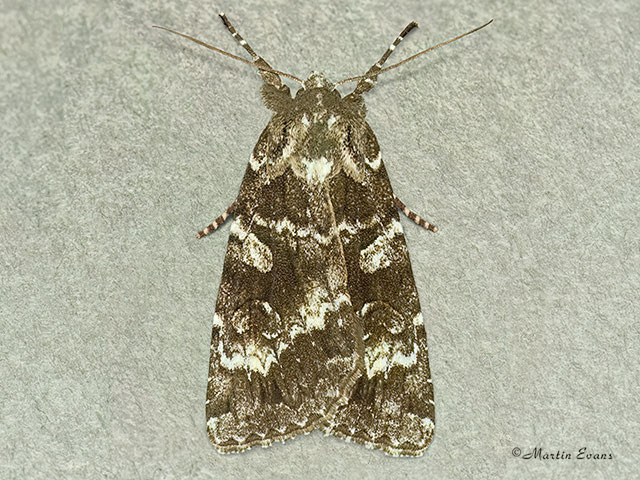Noctuidae
73.350 Great Brocade Eurois occulta (Linnaeus, 1758)
Notable B / Immigrant
Similar species: A large distinctive moth where if care is taken is unlikely to be mistaken for any other British or Irish species.
Forewing: 24 to 27mm
Habitats: Boggy scrub moorland along river margins, Scottish glens, pine forest and deciduous woodland.
Habits: The moth is attracted to sugar and comes to light late at night.
Foodplant: The mainly nocturnal larva at first feeds on Bog Myrtle and herbaceous plants. In the spring woody plants such as birches and sallows are commonly eaten. It pupates in moss or leaf litter without a cocoon.
On the European mainland it has also been recorded feeding on Bilberry, Bog Bilberry, Heather, Orpine, Wild Thyme, willowherbs, Blackthorn, Honeysuckle, Grey Alder, Aspen and Silver Birch.




